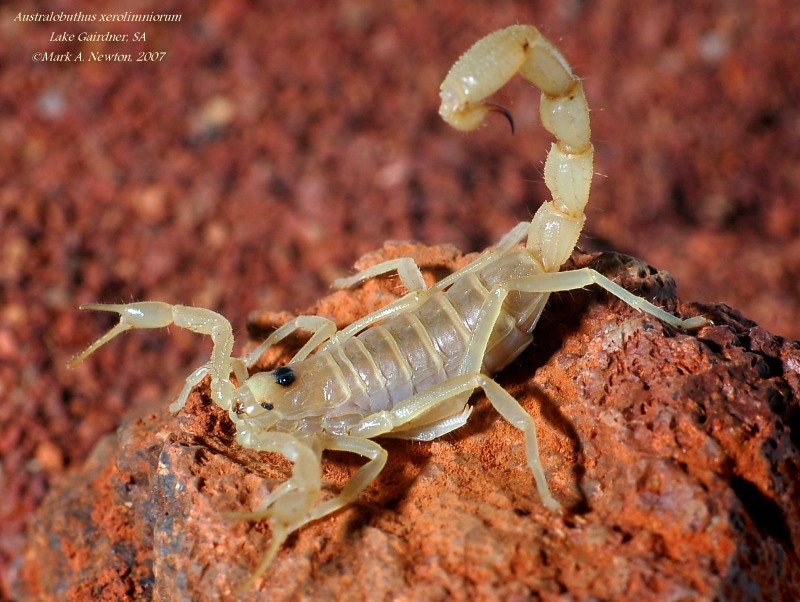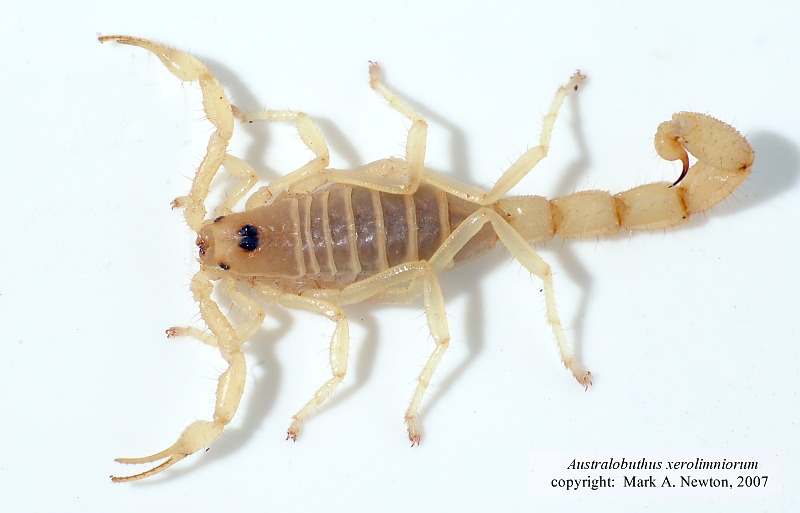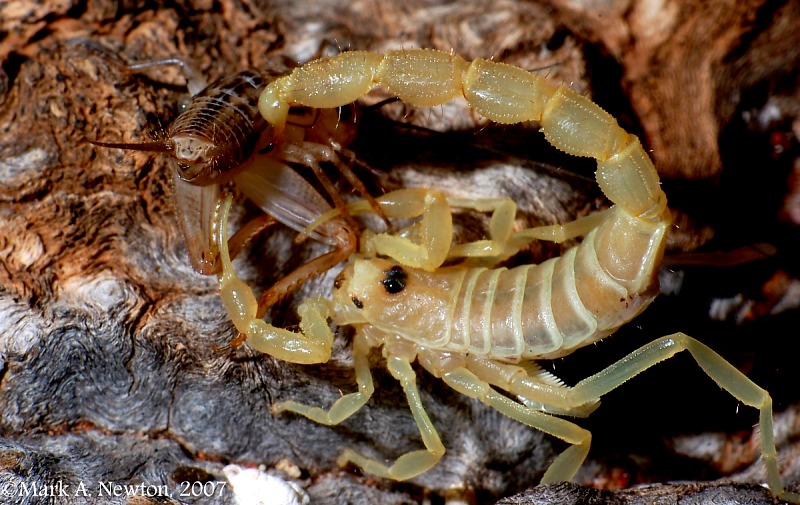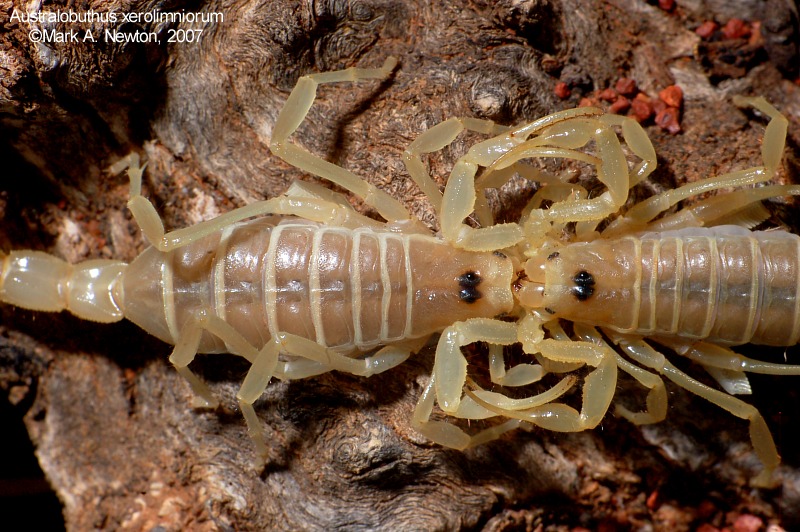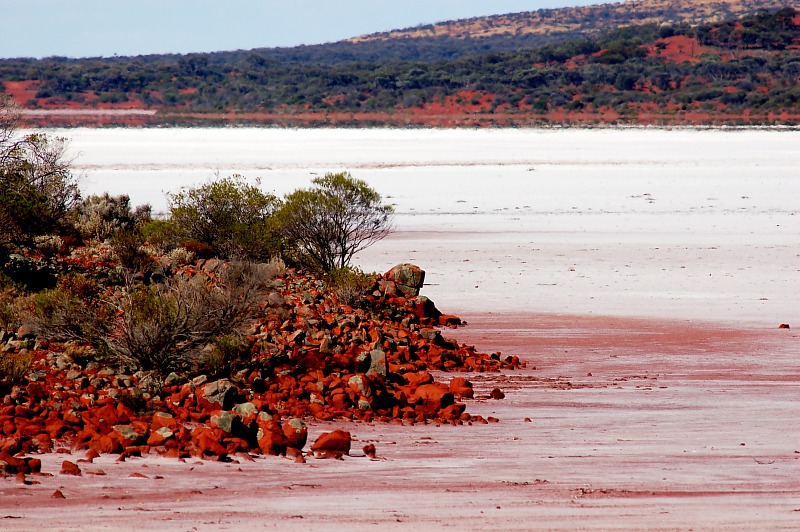|
- the Spiral Burrow Library - Australobuthus xerolimniorum (N A Locket, 1990)
A unique scorpion described by an Adelaide researcher in 1990 was so different, a new genus had to be established in support of it. The name Australobuthus means southern Buthid, a southern member of the Buthidae family, one of the oldest scorpion familes existing today.
They motor along continuously until a potential food item is found, afterwhich a well deserved rest enables digestion in comfort. The very pale body and lack of pigment gives excellent camouflage against the white crusty surface. The environment they forage in has earnt them the name, xerolimniorum, which means dry inland water body. They are thought to have derived from the very similar Lychas group of scorpions. They do not show a subaculear tubercle as the Lychas do and do not have the punctate tail segments of Isometroides. Australia has quite a degree of radiation from the early Buthid ancestors, many evolving as a result of the drying of the continent. A relatively small scorpion, growing to a maximum size of around 45mm. Males have slightly longer pectines than females, but otherwise they are very similar. They have a relatively weak venom, often stinging small prey items such as crickets a number of times before movement is stopped. Having been stung by one I can say from first hand experience (no pun intended), that the pain is mild, painful enough to be fully aware of the sting, but certainly not extremely painful. Painful throbbing was localised to the sting site and lasted a number of hours before it was left with nothing more than 'pins and needles', a common feeling from scorpion sting as a result of nerve damage. The latter feeling was completely gone after 12 hours. My research is showing these scorpions to be very resistant to desiccating conditions, meaning they must spend quite a bit of time surface active and possibly seek refuge in shoreline areas where soil water retention is not that high.
A pair of scorpions in captivity do the mating promenade:
Habitat, Dry inland salt lakes of South Australia, surface forager:
|
